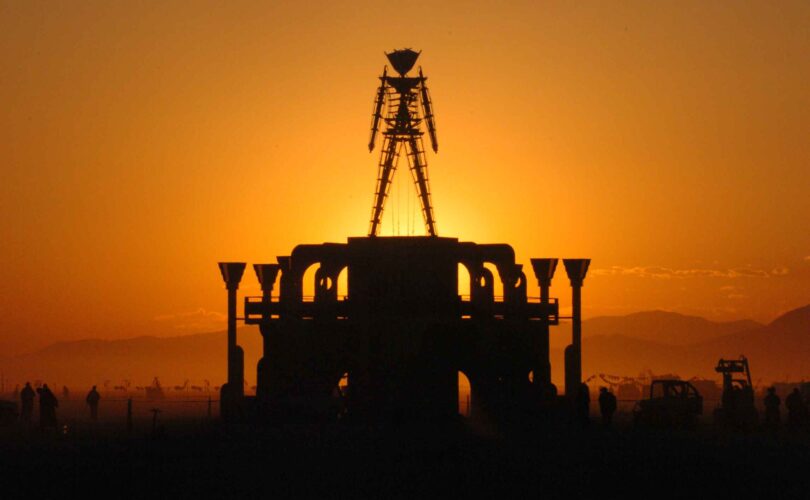Burning Man, the week-long drug-fueled cultural festival hosted annually in the Nevada desert, came to a screeching halt when heavy rains and flash flooding near Las Vegas left more than 70,000 stranded. After nearly a week of floods, toxic mud, rumored disease outbreaks, overflowing toilets, and rapidly dwindling supplies, festival-goers were finally cleared to return home on Tuesday—but it seems Burning Man’s problems are far from over.
The crisis at Burning Man 2023 began last week, when the gates of Black Rock City, the temporary community built on festival grounds, first opened to early arrivals. Heavy rainfall the previous weekend caused widespread flooding across northern Nevada. By the time Labor Day weekend came around, the dry desert ground had turned into a thick, ankle-deep mud. By Friday evening, the only road in and out of Black Rock City had been closed once the mud rendered it impassable.
For anyone in BRC, help each other stay safe. The gate and airport in and out of Black Rock City remain closed. Ingress and egress are halted for the time being. Stay prepared for adverse weather conditions continuing through the night and into Saturday.
— Burning Man Project (@burningman) September 2, 2023
Local law enforcement halted all non-emergency vehicles and urged attendees to begin conserving fuel, food, and water while sheltering in place. Since the late 1980s, the Burning Man festival has promoted “radical self-expression” and self-reliance, with each visitor encouraged to provide their own shelter and supplies. However, in the face of this unprecedented shutdown, many began to worry that supplies would run out before an evacuation was possible.
Over the course of the weekend, rumors and conflicting reports began circulating about what exactly was happening in Black Rock City. Porta-potties quickly overflowed, leaving a foul stench over the entire camp. While reports of an Ebola outbreak ultimately proved to be unfounded, many of the stranded Burners suffered chemical burns from prolonged exposure to the alkali-rich mud found in the Black Rock Desert. Local authorities also announced that 32-year-old festival-goer Leon Reece had died on Friday night, although his death is not believed to have been connected to the weather conditions.
On Monday, festival organizers announced that The Exodus (the departure at the end of the festival) would likely be possible by Tuesday. The burning of the giant effigy that gives the festival its name was finally rescheduled for Monday night.
The Exodus began as promised on Tuesday morning, with road conditions finally suitable for driving. However, given that the traffic jam leading out of Black Rock City can take up to 12 hours under ideal conditions, the journey home will likely be a frustrating one for the 64,000 Burners still waiting to leave.
The nearest highway is five miles away, only accessible by a two-lane dirt road. Aerial photos show that while the road is traversable, it remains muddy, with standing water visible in certain places.


















Add comment